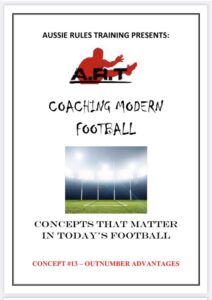
You're knee deep in running at training with lactate being produced faster then it can be utilised and you're just finding any old way to get through until the end.
You hunch over and put your hands on your knees, an unconscious action you didn't purposefully think of, but just did anyway.
The coach yells " stay upright, hands on heads!" while you gasp for oxygen.
Where did this come from?
My opinion is that it is just 1 tiny slice of the ego-oriented coaching of what should be a bygone era that is no longer here - but it is.
If you look tired, even when you are, apparently that's a sign of weakness but it's not, it's a sign of...well...tiredness!
Sorry but this is all bullshit.
If you scour the options from this Google search, you'll find multiple studies dispelling the hands on head myth that it doesn't actually allow you to get more oxygen into the lungs (or whatever you think it does), but it actually does the complete opposite.
In a nutshell, bending places your body an a far more better position to move oxygen through it then hands on head - try running with your arms overhead and let me know how you go.
Here's some data I took yesterday during my own running session.
My session consisted of running a specific distance in a specific time (15secs) with specific rest, so there were no anomalies in the session design.
I ended up doing 40 sets of runs alternating sets of 10 with standing rest with 10 sets of hands on knees rest.
For all sets my aim is to get to 107 beats per minute or lower in as little time as possible, but also within 90secs.
For sets 1 - 10 I rested in a normal standing position, not even hands on head which is far worse and my average set time (running time + resting time) was 70 - 80secs.
For sets 11 - 20 I rested in a hands on knees position and my average set time was 60 - 70secs, so a 10sec faster recovery time then the previous 10.
For sets 21 - 30 I again rested in a standing position with my average set time 65 - 75secs, faster recovery then the original standing rest sets.
For sets 31 - 40 I again rested with hands on knees and my average set time was just 50 - 60secs, and even faster recovery then any of the previous 30 sets.
I intended on ding another 20 more sets but my dog decided to cross the road from the park and started sniffing people's front yards so I had to stop and get the bugger.
Also keep in mind that this was yesterday, when it was a high of 39 here in Melbourne and already 28 degrees at 10am when I did these so even the heat on it's own should have been making these runs harder the more of them I performed.
It didn't and I could have easily got another 20 sets in and imagine if I did hands on knees rest for all of them? 100 sets would be in my sight for sure and I'm a terrible endurance runner being 46 and a sprinter/power type.
So it's settled then.
Hands on head recovery sucks and actually doesn't let you recover as fast between efforts as hands on knees does and if it gets to games and you're still not allowed to do it for fear of looking tired to the opposition, then I'd rather BE recovering faster between efforts then looking like I am but I'm really not, and coaches are doing a disservice to their players of they go too hard on this.











































